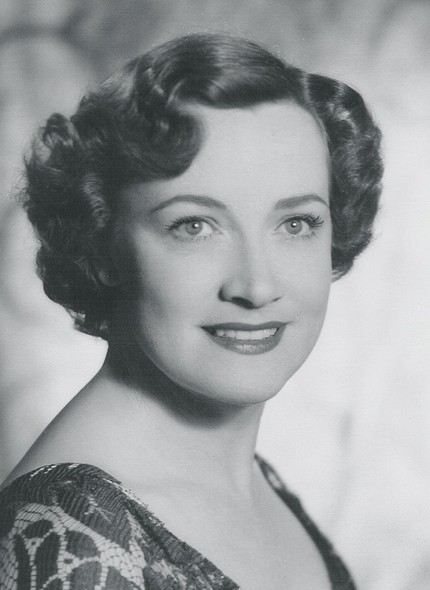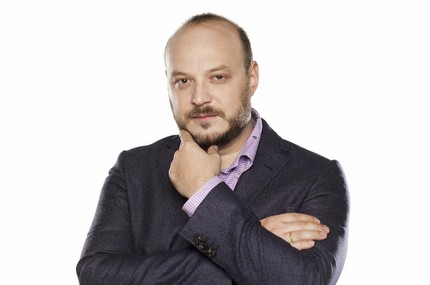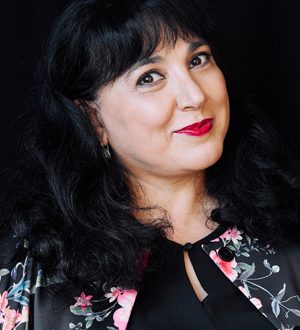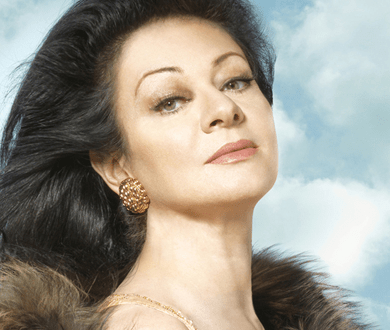
Kathleen Ferrier (Ferrier) |
Kathleen Ferrier

V.V. Timokhin writes: “Kathleen Ferrier had one of the most beautiful voices of our century. She had a real contralto, distinguished by a special warmth and velvety tone in the lower register. Throughout the entire range, the singer’s voice sounded rich and soft. In its very timbre, in the nature of the sound, there were some “original” elegiac and inner drama. Sometimes a few phrases sung by the singer were enough to create in the listener an idea of an image full of mournful grandeur and strict simplicity. It is not surprising that it is in this emotional tone that many of the singer’s wonderful artistic creations are solved.
Kathleen Mary Ferrier was born April 22, 1912 in the town of Haiger Walton (Lancashire), in the north of England. Her parents themselves sang in the choir and from an early age instilled in the girl a love of music. At Blackburn High School, where Kathleen was educated, she also learned to play the piano, sang in the choir, and acquired knowledge of basic musical disciplines. This helped her win the competition for young musicians, which was held in a nearby town. Interestingly, she received two first prizes at once – in singing and in piano.
However, the poor financial situation of her parents led to the fact that for several years Kathleen worked as a telephone operator. Only at the age of twenty-eight (!) she began to take singing lessons in Blackburn. By that time, World War II had begun. So the first performances of the singer were at factories and hospitals, at the location of military units.
Kathleen performed with English folk songs, and with great success. They immediately fell in love with her: the beauty of her voice and the artless manner of performance captivated the listeners. Sometimes an aspiring singer was invited to real concerts, with the participation of professional musicians. One of these performances was witnessed by the famous conductor Malcolm Sargent. He recommended the young singer to the leadership of the London concert organization.
In December 1942, Ferrier appeared in London, where she studied with the prominent singer and teacher Roy Henderson. Soon she began her performances. Kathleen has sung both solo and with leading English choirs. With the latter, she performed oratorios by Handel and Mendelssohn, passively by Bach. In 1943, Ferrière made her debut as a professional singer in Handel’s Messiah.
In 1946, the singer met the composer Benjamin Britten, whose name was on the lips of all the country’s musicians after the premiere of his opera Peter Grimes. Britten was working on a new opera, The Lamentation of Lucretia, and had already outlined the cast. Only the party of the heroine – Lucretia, the embodiment of purity, fragility and insecurity of the female soul, for a long time did not dare to offer anyone. Finally, Britten remembered Ferrière, the contralto singer he heard a year ago.
The Lament of Lucretia premiered on July 12, 1946, at the first post-war Glyndebourne Festival. The opera was a success. Subsequently, the troupe of the Glyndebourne Festival, which included Kathleen Ferrier, performed it more than sixty times in various cities of the country. So the name of the singer became widely known among English listeners.
A year later, the Glyndebourne Festival reopened with an opera production featuring Ferrière, this time with Gluck’s Orpheus and Eurydice.
The parts of Lucretia and Orpheus limited Ferrier’s operatic career. The part of Orpheus is the only work of the artist that accompanied her throughout her short artistic life. “In her performance, the singer brought pronounced expressive features,” notes V.V. Timokhin. – The artist’s voice shimmered with many colors – matte, delicate, transparent, thick. Her approach to the famous aria “I lost Eurydice” (third act) is indicative. For some singers (it suffices to recall in this connection the remarkable interpreter of the role of Orpheus on the German stage, Margaret Klose), this aria sounds like a mournful, sublimely enlightened Largo. Ferrier gives it much more impulsiveness, dramatic impetuousness, and the aria itself takes on a completely different character – not pastorally elegiac, but passionately passionate … “.
After one of the performances, in response to the praise of an admirer of her talent, Ferrier said: “Yes, this role is very close to me. To give everything you have to fight for your love – as a person and an artist, I feel in constant readiness for this step.
But the singer was more attracted to the concert stage. In 1947, at the Edinburgh Festival, she performed Mahler’s symphony-cantata The Song of the Earth. Conducted by Bruno Walter. The performance of the symphony became a sensation at the festival.
In general, Ferrier’s interpretations of Mahler’s works constituted a remarkable page in the history of modern vocal art. V.V. writes about this vividly and colorfully. Timokhin:
“It seems that Mahler’s grief, compassion for her heroes found a special response in the singer’s heart …
Ferrier feels surprisingly subtly the pictorial and pictorial beginning of Mahler’s music. But her vocal painting is not just beautiful, it is warmed by a hot note of participation, human sympathy. The performance of the singer is not sustained in a muffled, chamber-intimate plan, it captures with lyrical excitement, poetic enlightenment.
Since then, Walter and Ferrier have become great friends and often performed together. The conductor considered Ferrière “one of the greatest singers of our generation”. With Walter as a pianist-accompanist, the artist gave a solo recital at the 1949 Edinburgh Festival, sang at the Salzburg Festival of the same year, and performed at the 1950 Edinburgh Festival in Brahms’ Rhapsody for Mezzo-Soprano.
With this conductor, Ferrier made her debut in January 1948 on American soil in the same symphony “Song of the Earth”. After a concert in New York, the best music critics in the United States responded to the artist’s debut with enthusiastic reviews.
The artist has twice visited the United States on tour. In March 1949, her first solo concert took place in New York. In the same year, Ferrier performed in Canada and Cuba. Often the singer performed in the Scandinavian countries. Her concerts in Copenhagen, Oslo, Stockholm have always been a great success.
Ferrier often performed at the Dutch Music Festival. At the first festival, in 1948, she sang “The Song of the Earth”, and at the festivals of 1949 and 1951 she performed the part of Orpheus, causing unanimous enthusiasm from the public and the press. In Holland, in July 1949, with the participation of the singer, the international premiere of Britten’s “Spring Symphony” was held. At the end of the 40s, Ferrier’s first records appeared. In the discography of the singer, a significant place is occupied by recordings of English folk songs, the love for which she carried through her whole life.
In June 1950, the singer took part in the International Bach Festival in Vienna. Ferrière’s first performance before a local audience was in the Matthew Passion at the Musikverein in Vienna.
“The distinctive features of Ferrier’s artistic manner — high nobility and wise simplicity — are especially impressive in her Bach interpretations, full of concentrated depth and enlightened solemnity,” writes V.V. Timokhin. — Ferrier perfectly feels the monumentality of Bach’s music, its philosophical significance and sublime beauty. With the richness of the timbre palette of her voice, she colors Bach’s vocal line, gives it an amazing “multicolor” and, most importantly, emotional “voluminousness”. Ferrier’s every phrase is warmed by an ardent feeling – of course, it does not have the character of an open romantic statement. The singer’s expression is always restrained, but there is one remarkable quality in her – the richness of psychological nuances, which is of particular importance for Bach’s music. When Ferrier conveys the mood of sadness in his voice, the listener does not leave the feeling that the seed of a dramatic conflict is ripening in his bowels. Likewise, the singer’s bright, joyful, uplifted feeling has its own “spectrum” – anxious trembling, agitation, impulsiveness.
In 1952, the capital of Austria welcomed Ferrier after a brilliant performance of the mezzo-soprano part in the Song of the Earth. By that time, the singer already knew that she was terminally ill, the intensity of her artistic activity was significantly reduced.
In February 1953, the singer found the strength to return to the stage of the Covent Garden Theater, where her beloved Orpheus was staged. She performed only in two performances out of the planned four, but, despite her illness, she was brilliant as always.
Critic Winton Dean, for example, wrote in Opera magazine about the premiere performance on February 3, 1953: “The amazing beauty of her voice, high musicality and dramatic passion allowed the singer to embody the very core of the legend of Orpheus, convey the grief of human loss and the all-conquering power of music. Ferrier’s stage appearance, always extraordinarily expressive, was especially impressive this time. On the whole, it was a performance of such enchanting beauty and touchingness that she completely eclipsed all her colleagues.
Alas, on October 8, 1953, Ferrier passed away.





